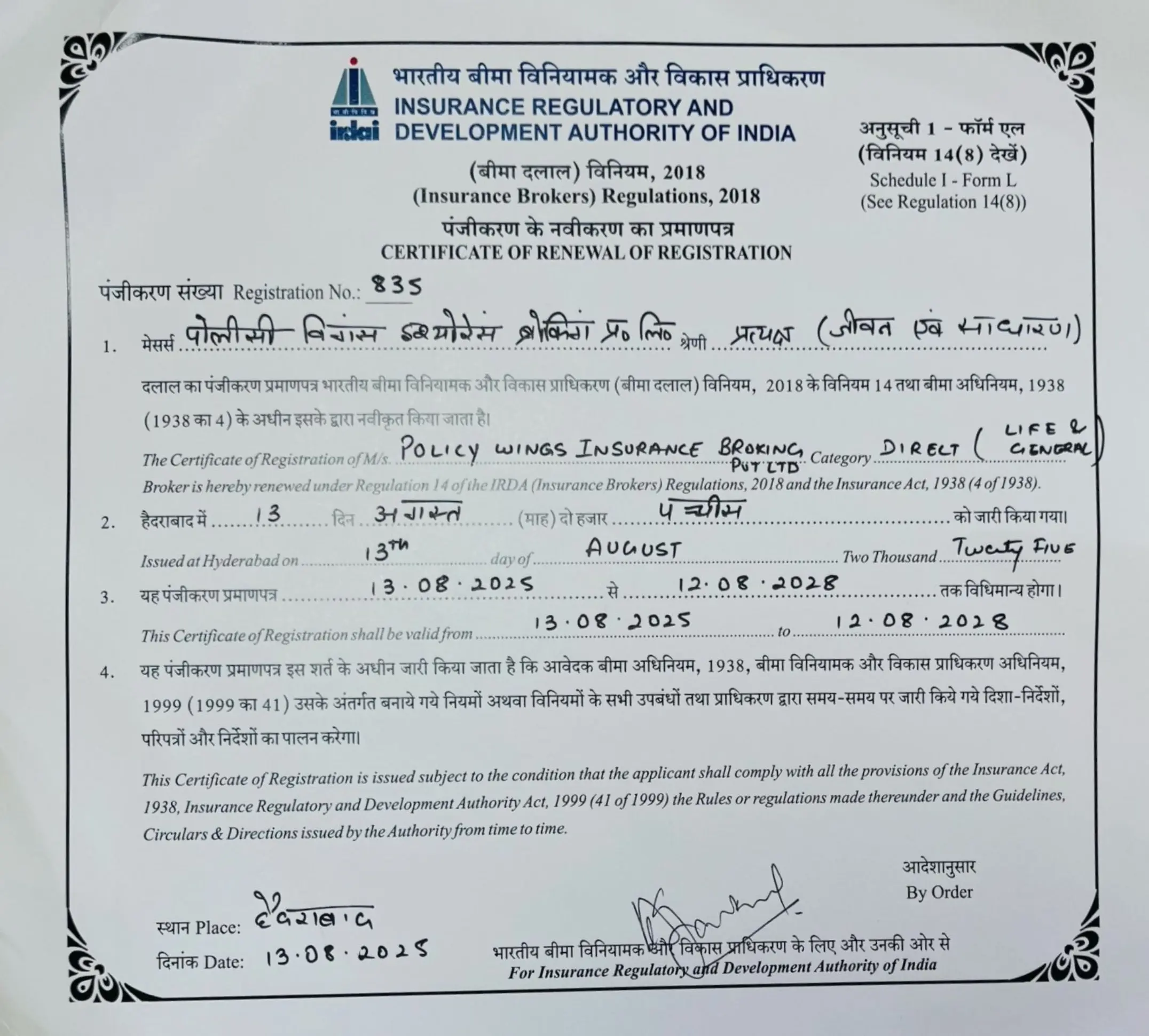Since regulatory reforms are changing the landscape for business to business insurance, business insurance laws in India and business insurance compliance are at a critical juncture. In today’s dynamic Indian insurance ecosystem, corporate entities, insurance intermediaries, and risk managers must adhere to legal requirements, comprehend them, and implement best practices.
Legal and Regulatory Framework
The Insurance Act of 1938 and the IRDA Act of 1999, which together constitute the foundation of insurance regulation in India, are at the centre of the system. Foreign direct investment (FDI) restrictions have increased since liberalisation; in 2014, they went from 26% to 49%, and as of the 2021 amendment, they are now 74%.
The Insurance Laws (Amendment) Bill, 2024, proposes further expansion towards 100% FDI.
In order to conduct life, general, standalone health, or reinsurance business, insurance companies must be registered as public limited companies under the Companies Act. Each category requires a different registration certificate from IRDAI. Minimum capital thresholds of INR 1 billion for life, general, and health insurers, INR 2 billion for reinsurers, and INR 0.5 billion for reinsurance branches are among the main mandated requirements.
Under the IRDAI’s Foreign Reinsurer Regulations, 2024, which include requirements like credit ratings, capital infusion, and home regulator clearance, foreign reinsurers are permitted to conduct business through registered branches.
Entities operating in the International Financial Services Centre (IFSC) are required to register with the IFSCA as IFSC Insurance Offices (IIOs), fulfilling the regulatory and capital requirements specific to their home registrations.
Notable 2024 25 Regulatory Reforms
The goal of IRDAI’s recent principle based regulatory change is to strike a balance between innovation and compliance. It released unified rules in 2024 that addressed actuarial standards, policyholder protection, corporate governance, insurer registration, and online marketplaces.
IRDAI unveiled new rules at the beginning of 2025:
- Regulatory Sandbox Regulations, 2025, which support inter regulatory sandbox proposals across financial sectors, are intended to spur innovation in insurance offerings.
- The 2025 Maintenance of Information Regulations require robust data governance, internal controls, and safe electronic record keeping.
- Regulations for the Meetings, Insurance Advisory, and Reinsurance Advisory Committees have been updated to improve governance flexibility and structure.
- A health insurance safety measure has a yearly premium cap of 10% for seniors 60 and older, with regulatory approval needed for any modifications.
- With effect from 1 April , 2026, ULIPs with yearly premiums exceeding INR 2.5 lakh will no longer be exempt from Section 10(10D) of the Income Tax Act. Instead, they will be subject to capital asset taxation, which levies 12.5% long term CG tax on equity oriented funds.
Business Insurance Compliance and Practical Implications
Strict adherence to capital norms, registration procedures, and governance standards is necessary for B2B insurance players to comply. According to IRDAI’s Registration Regulations, directors and other important managerial staff must fulfil standards related to their reputation and professionalism, including the lack of disciplinary actions.
Before being issued, policies must be submitted to internal committees or IRDAI. Furthermore, access to Consumer Courts is unaffected, and policyholders have the legal right to contest claims under the Insurance Act even if the terms of the policy try to limit status. Importantly, after three years, insurers are unable to contest life insurance policies on grounds such as fraud, thereby enhancing insured protections.
Although indemnity for directors and officers is allowed under the Companies Act of 2013, premiums are regarded as compensation in the event that misconduct is proven.
A number of insurance types, including third party auto insurance, public liability insurance, employee state insurance, and aviation and marine carriage acts, are required by law. To avoid legal repercussions, corporations must assess relevant mandates in the context of their business.
Insurance companies are subject to the PMLA 2002’s anti money laundering regime; to guarantee adherence to India’s AML regulations, due diligence, transaction monitoring, and reporting of suspicious activity must be properly executed.
Best Practices for B2B Insurance Players
- Retain Regulatory Vigilance: To remain compliant and ahead of the curve, keep an eye on and execute IRDAI reforms, particularly the sandbox, data, and governance regulations.
- Invest in Digital Infrastructure and Governance: Board approved systems for risk reporting, data security, audits, and policy draughting guarantee efficiency and compliance.
- Put Policyholder Protection First: Openness in product design, senior premium caps, and equitable claims processing build confidence and minimise conflict.
- Leverage Innovation Safely: For experimental products, make use of regulatory sandbox mechanisms while maintaining consumer protections and compliance.
- As Bill 2024 suggests complete liberalisation, make sure business structures are in line with FDI restrictions and capital needs to support growth and collaborations.
- Integrate AML Protocols: To reduce legal and reputational risks, follow PMLA guidelines with strong KYC, transaction reviews, and reporting systems.
Conclusion
In 2025, liberalisation, digital reform, and principle based regulation will have transformed India’s business insurance laws. Compliance for business to business insurance companies encompasses not only following the law but also innovation, governance, and customer trust. Businesses can secure sustainable growth in India’s changing insurance ecosystem by navigating the regulatory landscape with agility and confidence by investing in strong frameworks, aligning operations with changing norms, and adjusting to new regulatory tools.






